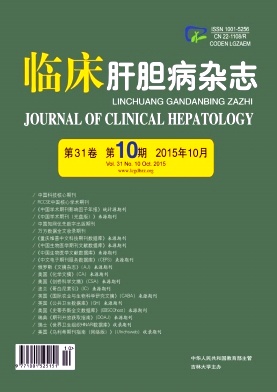Objective To explore the clinical application of preoperative biliary drainage in the treatment of patients with malignant obstructive jaundice( MOJ) with acute cholangitis( AC). Methods A retrospective study was performed on the clinical data of 74 patients with MOJ and AC who were treated with preoperative biliary drainage in our hospital from January 2010 to December 2014. In those patients,29 patients treated with percutaneous transhepatic biliary drainage( PTCD) were assigned to PTCD group,and 35 patients treated with endoscopic retrograde biliary drainage( ERBD) were assigned to ERBD group. The levels of total bilirubin( TBil),direct bilirubin( DBil),and alanine aminotransferase( ALT) before and after treatment,total hospitalization cost,average duration of hospitalization,and postoperative complications were compared between the two groups. The advantages and disadvantages were compared between the two preoperative biliary drainage approaches. Between- group comparison of continuous data was made by t test,and between- group comparison of categorical data was made by χ2test. Results In both groups,the levels of TBil,DBil,and ALT were significantly reduced after treatment( all P < 0. 05).The ERBD group had significantly larger decreases in the levels of the three biochemical indices than the PTCD group( all P < 0. 05). The ERBD group had significantly shorter average duration of hospitalization and significantly lower total hospitalization cost than the PTCD group( t = 3. 172,P < 0. 05; t = 2. 562,P < 0. 05). The incidence of acute pancreatitis in the ERBD group was significantly higher than that in the PTCD group( 14. 28% vs 3. 45%,P < 0. 05); however,the incidence rates of biliary tract bleeding,biliary tract infection,and resection or puncture site infection were significantly lower in the ERBD group than in the PTCD group( all P < 0. 05). Conclusion Preoperative biliary drainage can substantially control AC symptoms and improve liver function. Compared with PTCD,ERBD achieves shorter duration of hospitalization,lower total hospitalization cost,and lower incidence rates of complications after treatment,which can be taken as the first choice for the treatment of MOJ with AC.







 DownLoad:
DownLoad: